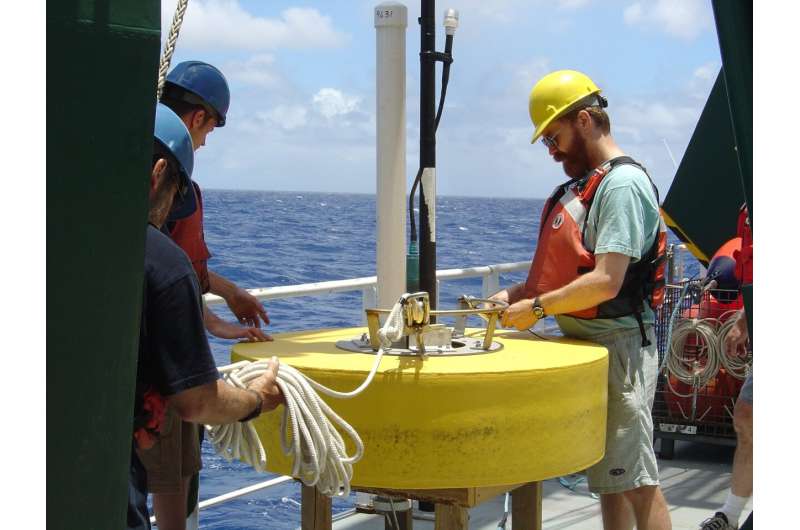Marine chemist Ken Buesseler works on a “clap-trap” mooring during the Vertical Transport In the Global Ocean (VERTIGO) project in 2004. As its name implies, this study looks at how materials—including excess carbon dioxide—get from the surface to the deep ocean. Credit: Clodagh Curran, Woods Hole Oceanographic Institution
While the urgent reduction of carbon dioxide (CO2) and other greenhouse gas emissions is needed as the primary activity to curb climate change, there is broad agreement for the need to remove CO2 already in the atmosphere. Given its outsized role in CO2 storage, the ocean can’t be ignored for its potential for marine carbon dioxide removal (mCDR) to help improve our stressed climate system.
Several of the world’s leading scientific bodies, including the Intergovernmental Panel on Climate Change and National Academies of Sciences, Engineering, and Medicine, identified ocean iron fertilization (OIF) as an emerging climate solution, and more than 400 scientists signed onto a letter calling for expanded mCDR research.
Governments around the world have invested tens of millions of dollars to advance ocean-climate solutions, signaling to the public sector, philanthropy, and academia the need to explore the role of the ocean in mitigating the effects of climate change.
Now, an article published in the journal Frontiers in Climate, titled “Next steps for assessing ocean iron fertilization for marine carbon dioxide removal,” spells out the work needed to assess the potential of OIF as a low cost, scalable, and rapidly deployable method of mCDR.
According to an international experts group called “Exploring Ocean Iron Solutions” (ExOIS) that is organized around a responsible code of conduct, OIF needs to be studied to determine if it is an efficient, and environmentally and socially responsible method of mCDR.
“This is the first time in over a decade that the marine scientific community has come together to endorse a specific research plan for ocean iron,” said lead author, Ken Buesseler, Executive Director of the ExOIS program, and Senior Scientist in the Marine Chemistry and Geochemistry Department at the Woods Hole Oceanographic Institution (WHOI).
2024-09-09 13:15:02
Post from phys.org
